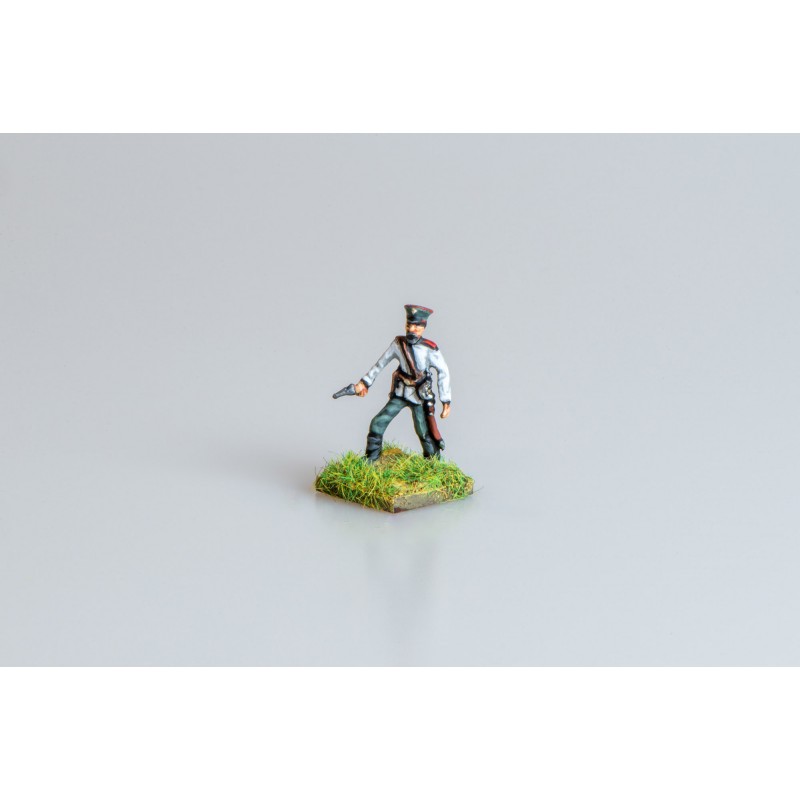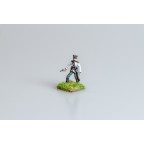This product is sold unpainted
ARMY COMMAND AND CONTROL
Battalion: Command and control at company and battalion level was predominantly
verbal. Russian officers used whistles, Japanese units used a system of runners
but in essence orders and communications was passed in the traditional manner.
Regiment/Division/Army. Russian infantry and cavalry
regiments were issued with four field telephones and 6km of wire. Japanese
forces had telephone units at army and divisional level which could be
allocated as required by the operational and tactical situation. There was some
use of heliographs and signal lamps as well as a semaphore network adapted from
the Russian Imperial Navy system.
Artillery Co-operation. Japanese artillery observers were
attached to front line units in the attack along with a telephone unit which
would lay wire as it advanced. It allowed close co-operation between infantry
and artillery in real time. Signal flags, visible at 1,800 with field glasses)
were used by artillery batteries. At Port Arthur the Japanese used a map grid
system and field telephone network to call down immediate fire on predetermined
targets.
THE WARGAMER. Passage of orders is not always something that is
considered in games and it can be quite difficult to simulate effectively.
However, the two elements that might be considered in any Russo-Japanese War
game are:
1. Speed of reaction and accuracy of indirect artillery fire if signal
flags or telephone communication are available.
2. Speed and timing of the committal of reserves in reaction to battlefield events if headquarters are linked by telephone, semaphore or signal flags.



